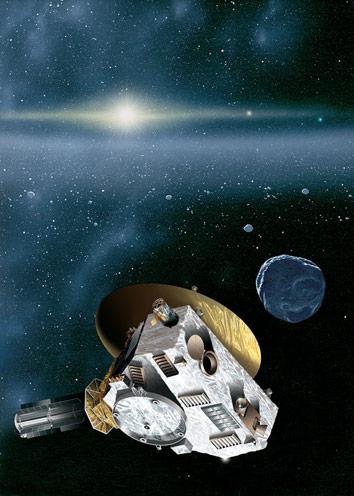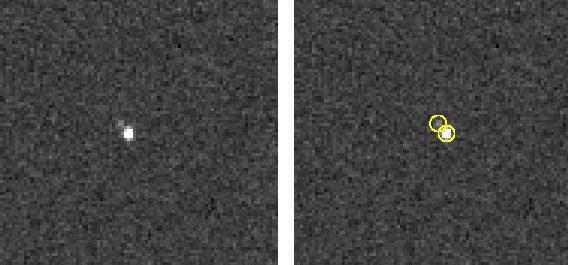Next year, in July 2015, the New Horizons probe will zip past Pluto at high speed, taking high-res images and detailed observations the whole time. We’ve never seen the ice ball up close before, so these data of the world (and its retinue of five known moons) will provide amazing new knowledge of it.
But then what?
It’s a good question. New Horizons is loaded with cutting-edge tech to explore strange, new worlds, and it would be a waste to just let it keep flying into infinity, targetless and unused.
The good news is that there are plenty of objects out past Pluto to investigate: the Kuiper Belt, a huge repository of giant chunks of ice, some hundreds or even thousands of kilometers across. Studying one of these up close would be a fantastic scientific opportunity.
The bad news: Space is big. That’s why we call it space. Out past Pluto the pickings are thin indeed; the odds of randomly passing close enough to a Kuiper Belt Object to see it as more than a single pixel dot are essentially zero. The best bet would be to find some that are near New Horizons’ path, and then steer the probe toward them. The earlier the better; the longer we wait the more precious fuel it would take to divert the craft.

Artwork depicting the New Horizons probe.
Drawing by JHUAPL/SwRI/Dan Durda
So now we’re back to good news: Scientists have announced that Hubble will be used to look for potential flyby opportunities.
As New Horizons flies past Pluto, the volume of space available for visits is an opening cone, wider the farther it travels. From Earth that projects as an area of sky near Sagittarius, and that’s where Hubble will look. This part’s cool: Any KBOs in that volume will orbit the Sun at a fairly well-understood rate, and so Hubble will slowly scan along the sky at that same apparent rate. Stars will appear as streaks, but the KBOs will look like dots. This is very helpful, because otherwise the light from these distant chunks of ice will get smeared out and look much fainter, making them very difficult to see.
This method has been used before to look for KBOs (though it’s unclear how successful it was). Hopefully any new search campaign will make sure the technique is likely to yield success. There will be a series of test observations first, and if it works, then a more dedicated and deeper survey will ensue.
I certainly hope this works out. New Horizons is a pretty cool mission and I’m all for using space hardware to its fullest potential. We’ve seen a few KBOs up close—assuming Saturn’s Phoebe and Neptune’s Triton count, and of course there will be Pluto itself after the flyby—but just a few. The more we investigate the more we’ll learn about these weird, remote objects.
(N.B. And to get this out of the way: I think the debate over whether Pluto is a planet or not is silly. It’s not even that we don’t have a definition for “planet,” it’s that we can’t. It’s not a definable property of an object.)
